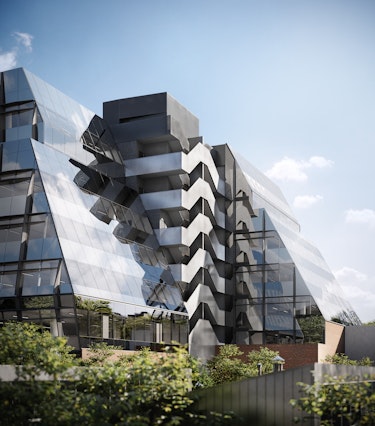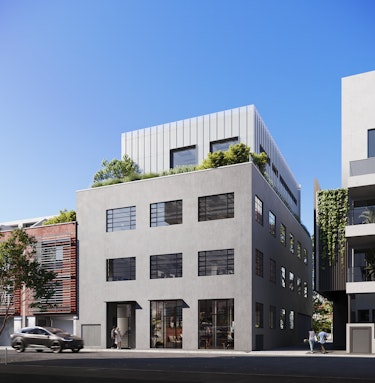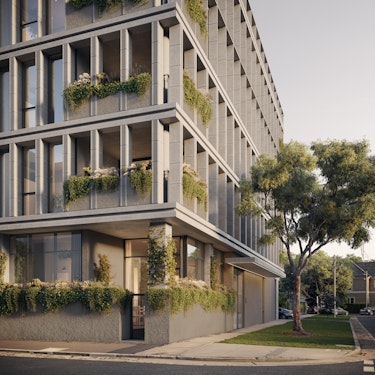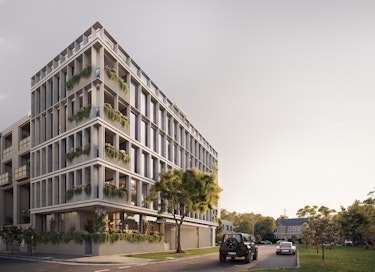Architectural visualization is a rapidly growing field that combines technology, design, and art. It is an essential tool for architects, designers, and builders to communicate their ideas and concepts with clients and stakeholders. In the past, architects would create two-dimensional drawings and models to communicate their designs. However, these traditional methods were often limited in their ability to convey the true essence of a design. With the advent of 3D modeling software, architectural visualization has become an increasingly important part of the design process.
At its core, architectural visualization is a form of visual communication that allows designers to create realistic representations of their designs. This includes creating digital models of buildings and structures, as well as adding realistic textures and lighting to create a lifelike image of the design. The goal of architectural visualization is to help clients and stakeholders understand the design and its potential impact on the environment and the community.
The technical skills required for architectural visualization are significant. In addition to a thorough understanding of 3D modeling software, visualizers must also have knowledge of materials, lighting, and rendering techniques. They must be able to use these tools to create a realistic and accurate representation of the design. This includes using different materials to create the appearance of different surfaces, such as wood, metal, or glass. They must also be able to use lighting to create the desired mood and atmosphere for the image. For example, they may use warm, natural lighting to create a welcoming atmosphere for a residential design, or use cool, artificial lighting to create a futuristic feel for a commercial design.
However, technical skill alone is not enough to create effective architectural visualizations. The visualizer must also have a strong sense of design and artistic creativity. This includes the ability to interpret the architect's vision and translate it into a visual language that is easily understood by others. The visualizer must make creative choices about how to represent the design in the digital space, such as choosing colors, materials, and textures that complement the overall design. They must also be able to create a sense of atmosphere and emotion in the image through lighting and composition.

One of the most important aspects of architectural visualization as an art form is its ability to communicate complex ideas in a clear and understandable way. Architects use visualizations to help clients and stakeholders understand the design concept, and to communicate technical details about the construction process. By creating visual representations of a design, architects can better explain their vision and gain support for their ideas. This is especially important in cases where the design is complex or innovative, as traditional two-dimensional drawings may not be sufficient to fully convey the design.
Another important aspect of architectural visualization as an art form is its ability to inspire. A well-crafted image can inspire people to think about the possibilities of design and architecture. It can encourage people to consider the ways in which architecture can shape our world and improve our lives. By creating images that inspire and motivate, architectural visualizers are contributing to the larger discourse around architecture and design.
Architectural visualization can also be used as a tool for social and environmental advocacy. By creating images of sustainable or environmentally friendly designs, visualizers can raise awareness of the importance of responsible design and construction practices. They can also use their skills to create visualizations of designs that promote social equity and community engagement. By using architectural visualization as a tool for social and environmental advocacy, visualizers can have a positive impact on the world beyond the realm of design.

Architectural visualization is also an important tool for marketing and advertising. High-quality visualizations can be used to promote a development or building before it is even constructed. These images can be used in marketing materials, on websites, and in social media posts to generate interest and excitement about the project. By creating compelling visualizations that capture the imagination of potential buyers or investors, visualizers can help developers and architects to generate interest and secure funding for their projects.
In addition to marketing, architectural visualization is also an important tool for design critique and collaboration. Designers can use visualizations to communicate their ideas and concepts to other members of their team, such as engineers, contractors, and builders. This helps to ensure that everyone involved in the project has a clear understanding of the design and can work together to bring it to life. Visualizations can also be used to identify potential problems or issues with the design, allowing for modifications to be made before construction begins.

Another important aspect of architectural visualization as an art form is its ability to evoke emotion and create a sense of atmosphere. A well-crafted visualization can transport viewers to a different time and place, creating a sense of nostalgia or wonder. This is especially true for visualizations of historical or cultural sites, where the visualizer must take into account the history and context of the location. By creating visualizations that are true to the history and spirit of a place, visualizers can help to preserve and promote the cultural heritage of a region.
As technology continues to advance, the field of architectural visualization is becoming increasingly sophisticated. New software and techniques allow visualizers to create images that are more realistic and detailed than ever before. However, the role of the artist in architectural visualization remains as important as ever. While technology can create stunningly realistic images, it is up to the visualizer to make creative choices about composition, lighting, and atmosphere. The visualizer must use their artistic skill and creative vision to bring the design to life in a way that is both realistic and compelling.

In conclusion, architectural visualization is a vital part of the design process, combining technology, design, and art to create realistic and compelling visualizations of architectural designs. While technical skill is important, it is the artist's creativity and vision that sets great visualizations apart. As an art form, architectural visualization has the power to inspire, communicate complex ideas, and promote social and environmental advocacy. It is a tool for design critique and collaboration, as well as marketing and advertising. As technology continues to advance, the field of architectural visualization will undoubtedly continue to evolve, but its role as an essential part of the design process and as an art form will remain constant.
.jpg?ixlib=gatsbyFP&auto=compress%2Cformat&fit=max&q=75&w=375)